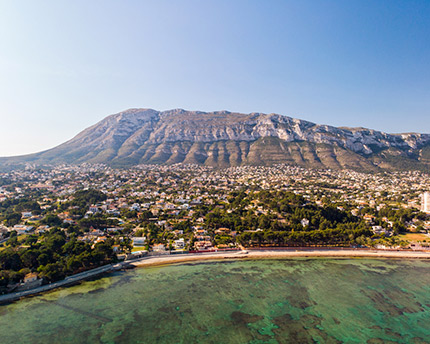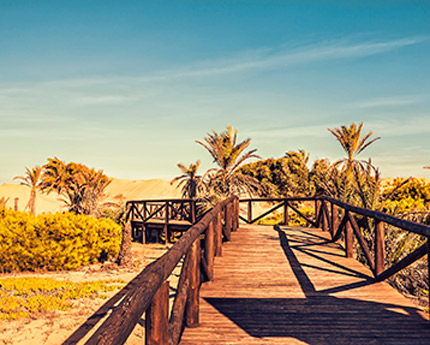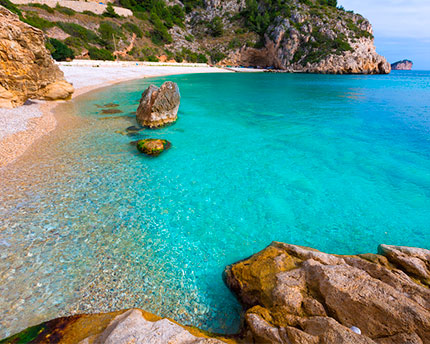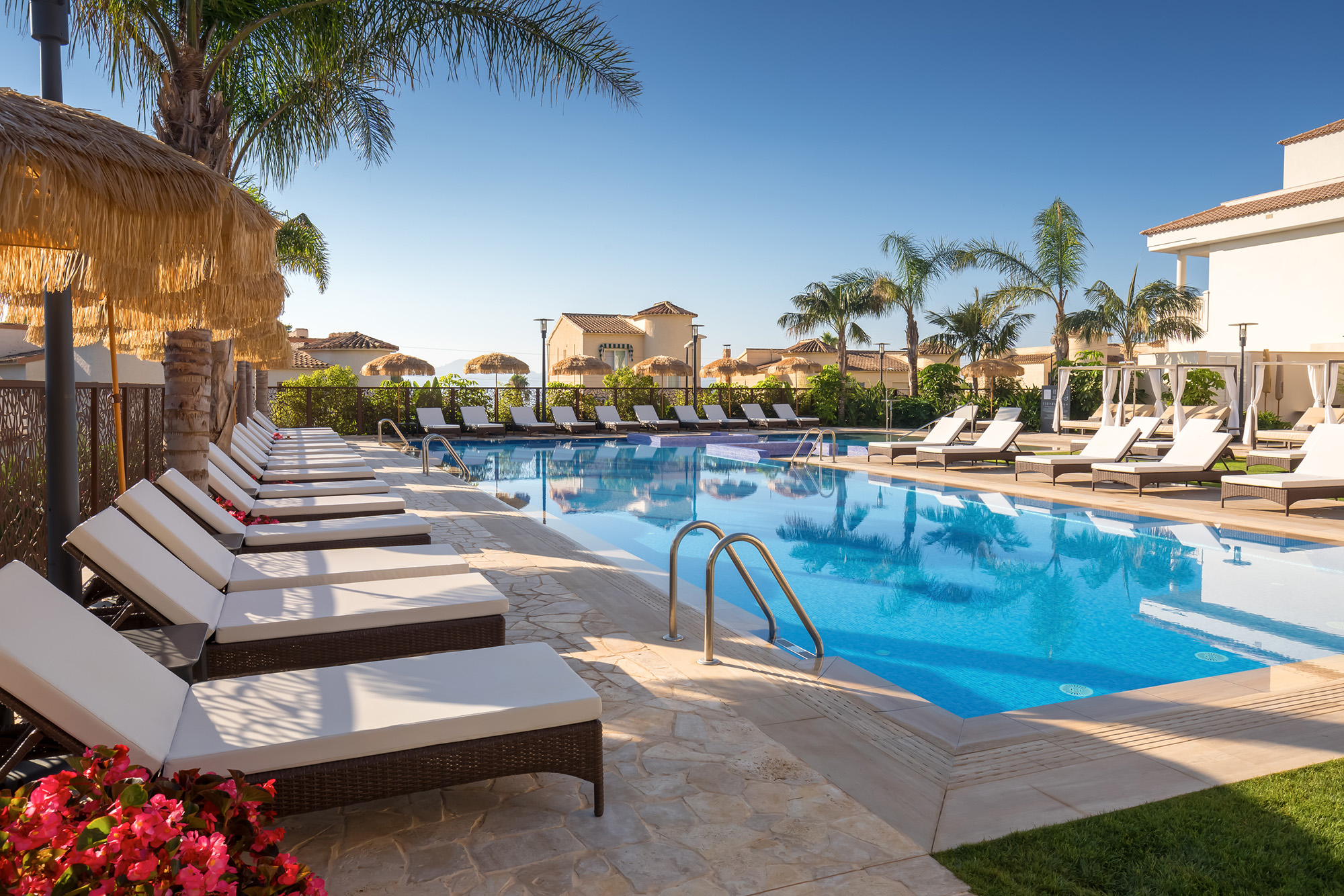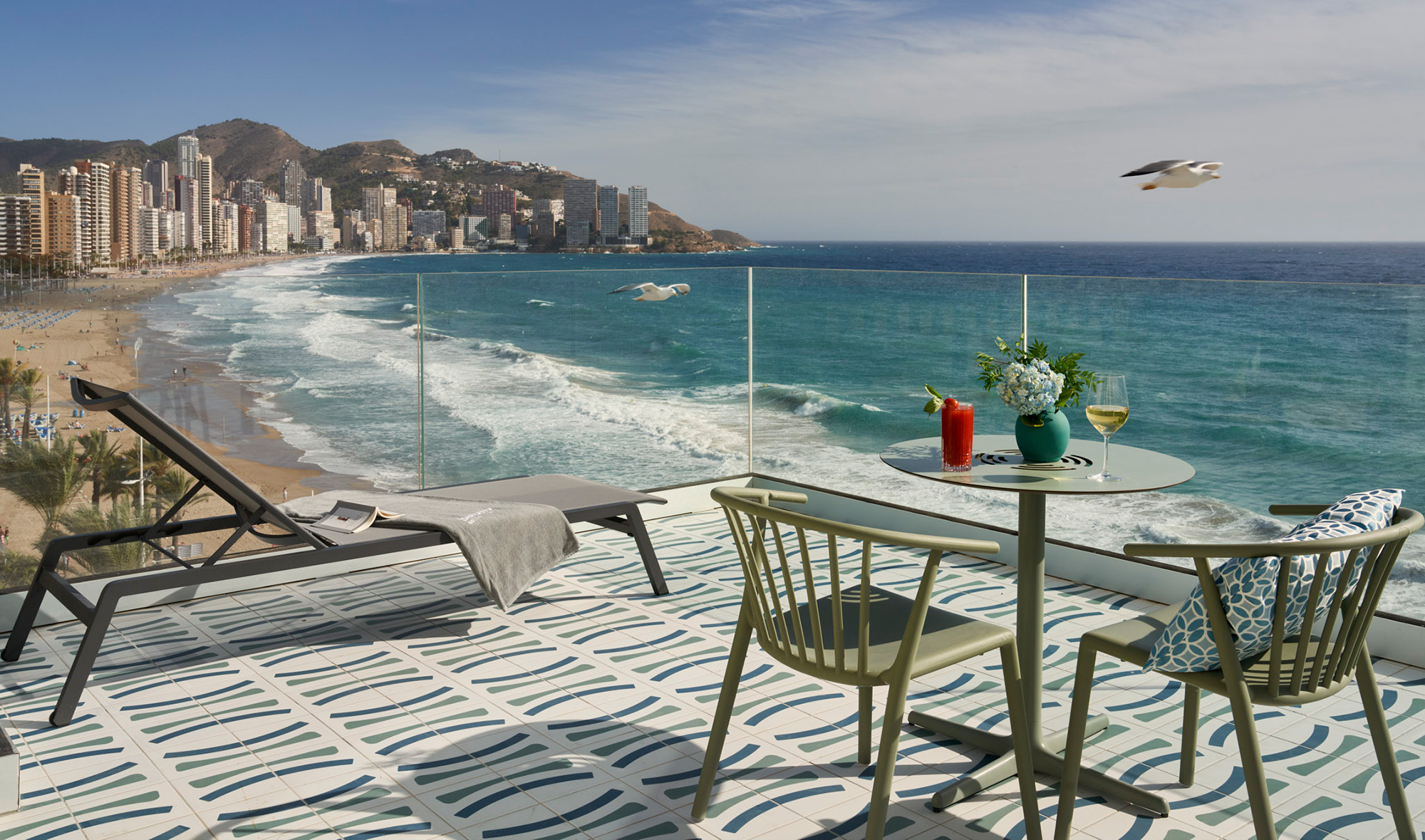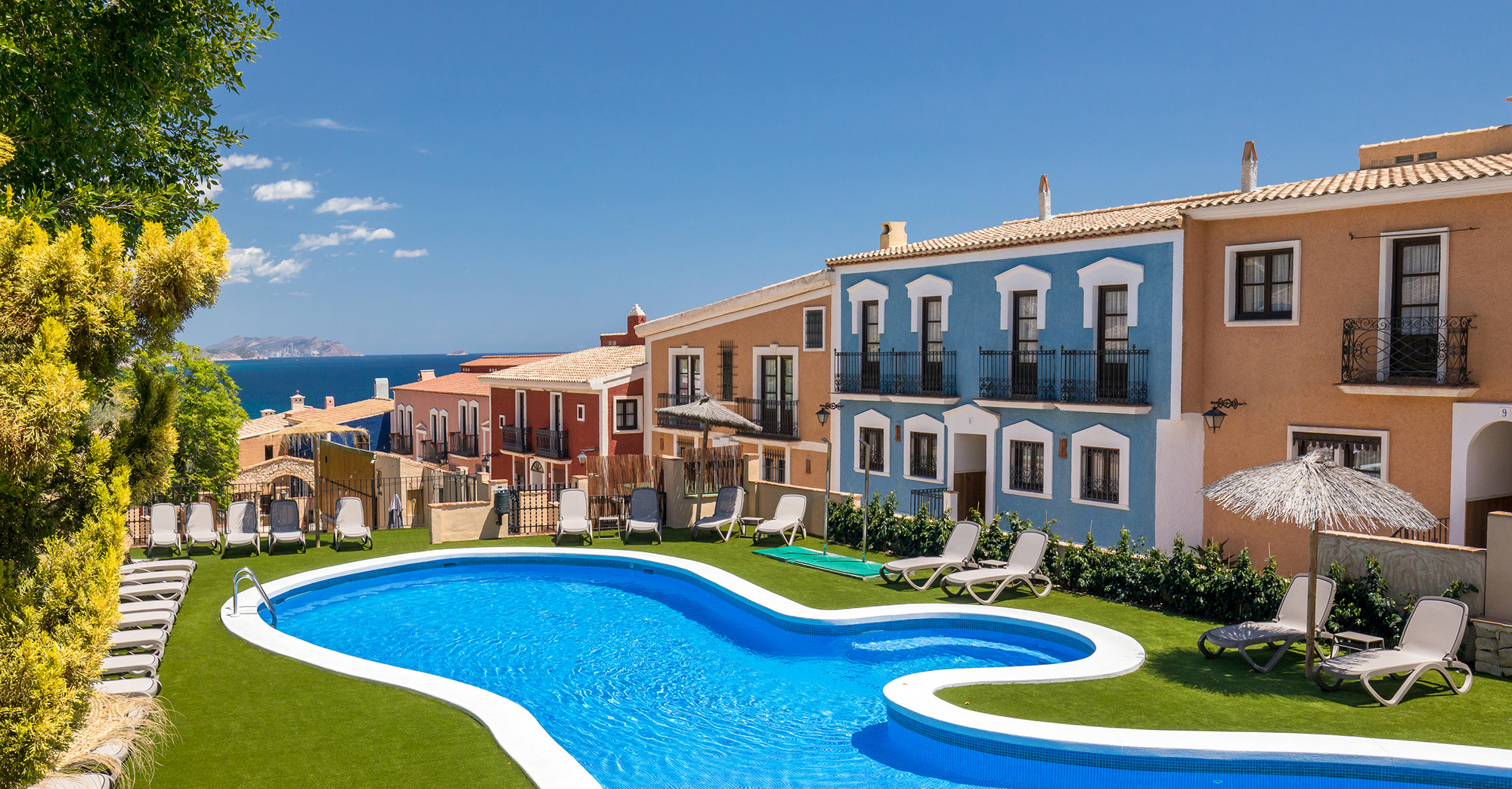The spectacular Montgó Massif rises to a height of 753 metres between the municipalities of Denia and Jávea. The beauty of this huge nature park by the sea is beyond any doubt. Its proximity to the coast makes it one of the most unique sites in the province of Alicante.
Are you fond of hiking? Then you will not want to miss this magnificent landscape of striking contrasts, where there is a wealth of flora and fauna like no other. The biodiversity found here is one of the main attractions of the Montgó Nature Park, where you can enjoy excursions in an area where the traces of history abound.
Montgó, a nature park coveted by humankind
The Montgó Massif has been a steadfast witness to the passage of time, and both its cultural and archaeological value are exceptional. It has been inhabited by human beings since the Upper Paleolithic, which means that its prehistoric caves and sites are among its most precious treasures. Arrowheads and ceramic fragments belonging to the Neolithic period have also been found here, and there are schematic cave paintings in places such as the Cova del Barranc de Migdia cave.
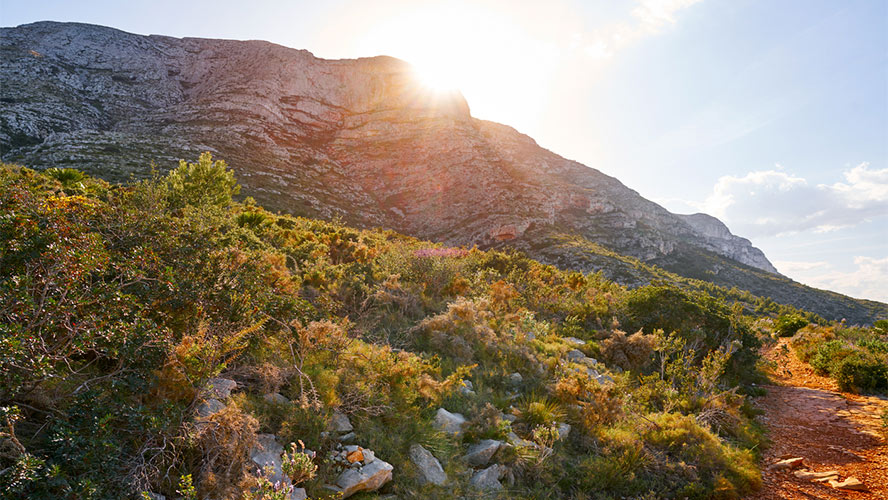
The remains of Iberian settlements, where even part of the defensive wall is still intact, confirm the presence of this Mediterranean indigenous people up until the 1st century BC. The Roman and Muslim remains found here are preserved in the archaeological museums of Denia and Jávea. This makes it quite clear that Montgó was an essential strategic point for controlling the territory.
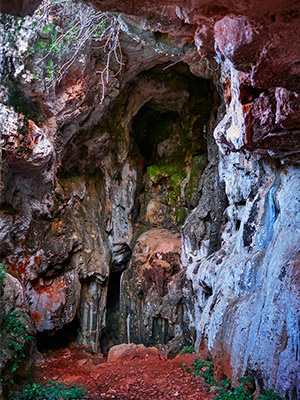
Besides the park’s historical importance, in its more than 2000 hectares there are over 650 different species of plants and more than 150 different vertebrates, such as Bonelli’s eagles, which is an endangered species in Europe, or peregrine falcons.
The nature park stretches as far as the Cape of San Antonio, where the Cova Tallada cave, which is famous for its beauty and for having been the quarry for the highly-prized “tosca” sandstone, and the Gerro Tower are located. The tower dates from the sixteenth century, when it was essential to warn of possible pirate attacks arriving by sea.
Montgó’s natural resources are innumerable and it is vital that efforts be made to preserve and care for them, as they are at risk of being lost. You can experience the park’s charms on any of its wonderful trails. Make a note of them all!
Main trails for hiking in the Montgó Nature Park
Speaking in geological terms, the park belongs to the last section of the Baetic system of mountain ranges. Although the Massif is not that high, its proximity to the sea means that the sharp drop is very striking. The materials that make up the Montgó are calculated to be between 70 million years old – the Lower Cretaceous period – and 5 million years old – the last Quaternary period.
It is not surprising that this was declared a nature park in 1987 and also classified as a Place of Geological Interest. Its orography is most unusual, with huge rock faces and ravines. The contrasts of the landscape are spectacular, with impressive cliffs shaped by the effects of the sea upon reaching the Cape of San Antonio.
Nor should we neglect its archaeological richness, which you will discover along the various trails. There are a number of paths marked according to the degree of difficulty and the length that you prefer. Some of them are:
-
Cova de L’Aigua-Racó del Bou Trail
The Cova de L’Aigua cave is one of Montgó’s main attractions. This trail is about 3.5 kilometres long and takes three hours to complete. It is of moderate difficulty, with several climbs. It starts at the Chapel of Pare Pere and will take you through the shaded area of the park, a small reserve with abundant plant species, so you should be careful not to damage anything. On arrival at the cave you will see a Roman inscription at the entrance and discover the cave’s main function in ancient times: collecting rainwater that filters through the rock for use as a storage tank for human consumption. The views that you will see along the trail, of the Gulf of Valencia, the Safor mountains, or even Ibiza on a clear day, are absolutely priceless.
-
Camí de Colonia-Cova del Gamell Trail
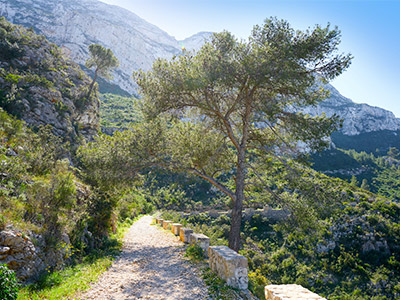
Colonia Road wildflife
This is an easy linear excursion that is 5 kilometres long, one way. There is no elevation change in the trail around the mountain, so it could be ideal if you are hiking with children. It also starts at the Chapel of Pare Pere and will take you through almond groves and other trees, so if you go in spring the blossom will be a wonderful sight. Along this trail you will have stunning views of Denia castle and the blue of the sea. Before reaching the Cova del Gamell cave you will pass by a number of archaeological remains, such as an old kiln where lime was made.
-
Shooting range-Montgó summit Trail
There are several trails that will take you to the top of Montgó. This is one of them if you are daring and want to climb to the heights. It is a challenging trail just under 4 kilometres long, with an elevation gain of over 500 metres. It starts at the Denia shooting range and is fully signposted. You will start off gaining height by means of switchbacks. The biggest complication comes in the last stretch, so you need to be in good physical shape. Once you reach the summit of Montgó, the superb panoramic views there may treat you to the sight of birds of prey in flight as a well-deserved prize. Can you imagine watching the sunset from the top?
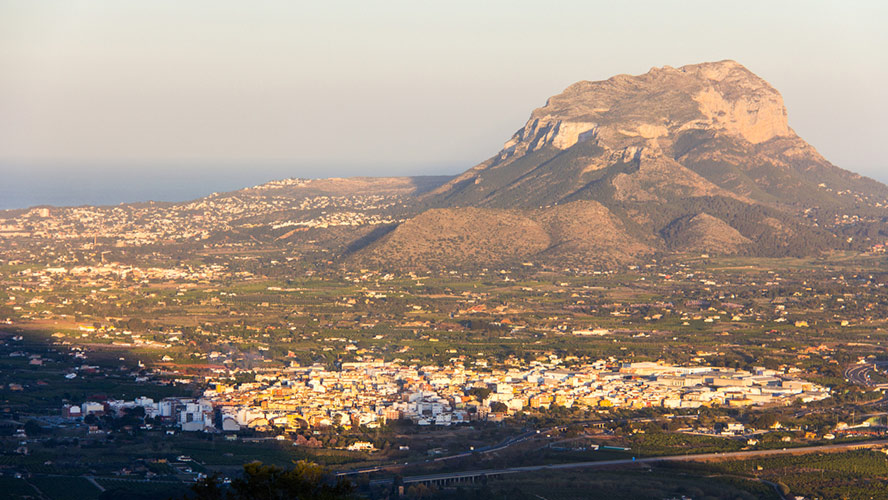
These are just some of the many options that the Montgó Nature Park offers in terms of hiking trails. Then there are the walks around Jesús Pobre to see the Iberian wall, or the Cape of San Antonio, where you can visit the Cova Tallada cave and the cove of Tango, and take a dip in its crystal clear waters.
There are outings for all tastes, some of them especially designed for cycling. You can find all the information at the Montgó Nature Park Interpretation Centre. This visit to the natural environment of the province of Alicante is one that is not to be missed.

























































